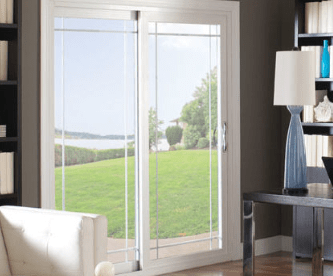- By Bella Blog
- Windows
- 0 Comment
Learn all about replacement window warranties, what they cover, and how they protect your investment in this informative blog post.
Types of Replacement Window Warranties
Replacement window warranties come in different types, each providing different levels of coverage and protection for your investment. The most common types of replacement window warranties include:
- Manufacturer’s Warranty: This type of warranty is provided by the manufacturer of the replacement windows and covers defects in materials and workmanship. It typically lasts for a specific period of time, such as 10 years.
- Installation Warranty: Some replacement window companies offer an installation warranty that covers any issues related to the installation process. This type of warranty is usually provided by the company that installed the windows and may vary in length.
- Glass Breakage Warranty: This type of warranty covers the replacement of glass in case of breakage. It is important to carefully read the terms and conditions of this warranty, as it may have certain limitations and exclusions.
Understanding the different types of replacement window warranties can help you make an informed decision when choosing the right windows for your home.
Coverage Details to Look For
When reviewing replacement window warranties, it is important to carefully examine the coverage details. Here are some coverage details to look for:
- Material Coverage: The warranty should specify which materials are covered, including the frame, glass, and hardware.
- Workmanship Coverage: The warranty should cover any defects in workmanship, such as improper installation or sealing.
- Energy Efficiency Coverage: If energy efficiency is important to you, make sure the warranty includes coverage for energy-efficient features, such as low-E glass or insulated frames.
- Transferability: Some warranties are transferable to subsequent homeowners, which can be a valuable selling point if you decide to sell your home.
By paying attention to the coverage details, you can ensure that your replacement window warranty provides the protection you need.
Common Exclusions
While replacement window warranties offer valuable coverage, it is important to be aware of common exclusions. Here are some common exclusions you may come across:
- Normal Wear and Tear: Warranties typically do not cover normal wear and tear, such as minor scratches or fading.
- Acts of Nature: Damage caused by natural disasters or severe weather conditions may not be covered by the warranty.
- Improper Maintenance: If you fail to properly maintain your replacement windows, the warranty may become void. It is important to follow the manufacturer’s maintenance guidelines.
- Unauthorized Repairs: If you attempt to repair the windows yourself or hire an unauthorized contractor, the warranty may be voided.
Understanding the common exclusions can help you set realistic expectations for your replacement window warranty.
Understanding Warranty Length and Transferability
The length of a replacement window warranty can vary depending on the manufacturer and type of warranty. Some warranties may last for a specific number of years, while others offer lifetime coverage.
In addition to the warranty length, it is important to consider whether the warranty is transferable. A transferable warranty can be a valuable selling point if you decide to sell your home, as it provides reassurance to potential buyers.
Before making a final decision on replacement windows, make sure to carefully review the warranty length and transferability to ensure they meet your needs and expectations.
Making a Claim: Steps and Requirements
In the unfortunate event that you need to make a claim on your replacement window warranty, it is important to understand the steps and requirements involved. Here are some general steps to follow:
1. Review the warranty documentation: Familiarize yourself with the terms and conditions of your warranty, including any specific requirements for making a claim.
2. Document the issue: Take photos or videos of the issue and gather any relevant documentation, such as receipts or invoices.
3. Contact the warranty provider: Reach out to the warranty provider to initiate the claims process. They will guide you through the necessary steps and documentation.
4. Follow the instructions: Follow the instructions provided by the warranty provider, which may include scheduling an inspection or providing additional information.
5. Resolution: Once the claim is processed and approved, the warranty provider will take the necessary steps to resolve the issue, whether it involves repair, replacement, or reimbursement.
It is important to note that the specific steps and requirements may vary depending on the warranty provider. Make sure to carefully follow their instructions to ensure a smooth claims process.

724-515-5163
www.mybellaroof.com
Bella Blog
Welcome to Bella Construction & Developement Inc., where excellence meets affordability in the realm of construction services.

